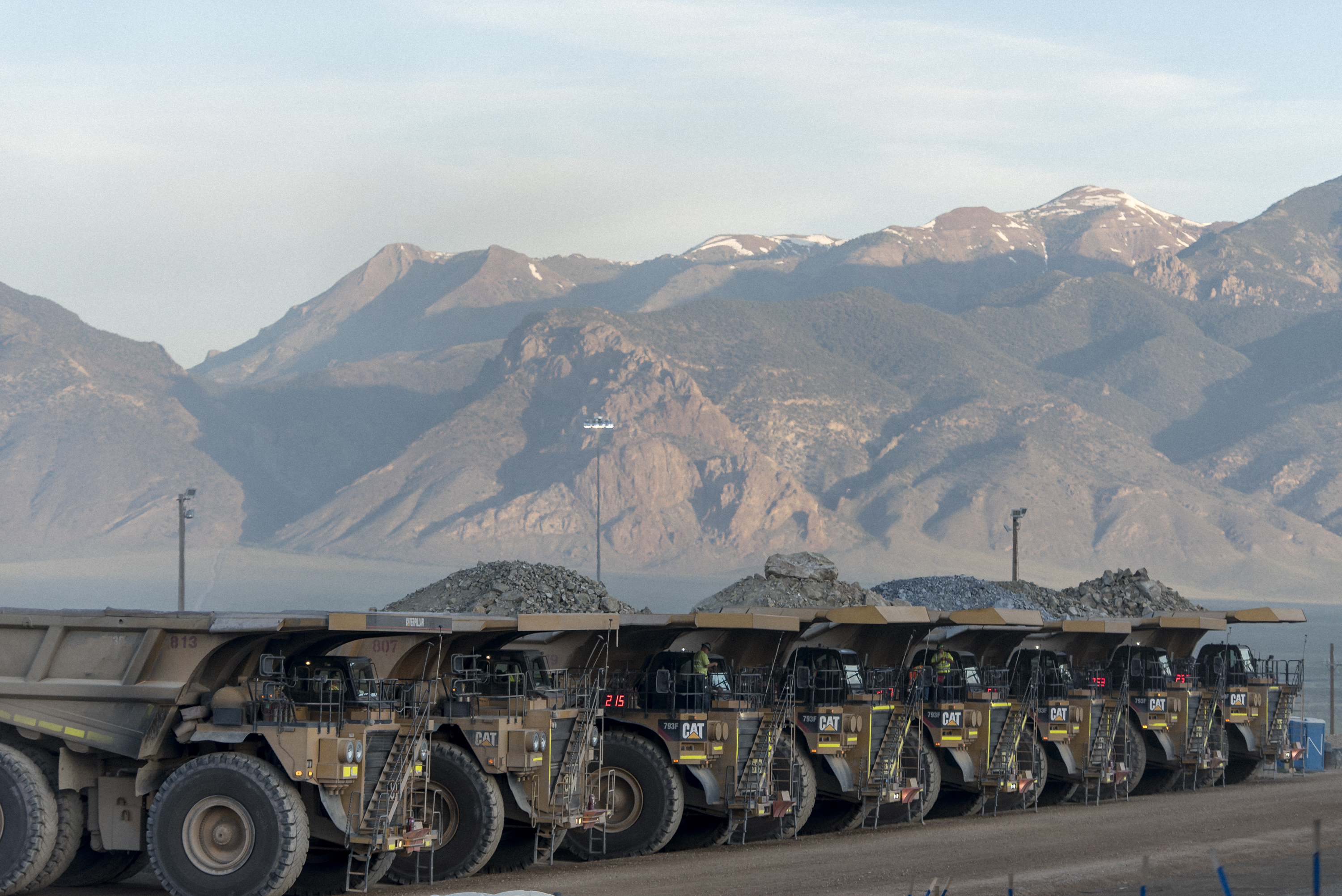
Modern miners have taken a scientific and sustainable approach to age-old pursuit of gold
Gold has long had a hold on our imagination. The word itself is synonymous with wealth and power; gold has been the stuff of trade, jewelry, sacred art and relics, royal status symbols, and even architectural opulence across cultures for centuries. It’s been currency and the standard for modern international monetary systems. More recently, gold has been a vital component in technology — in fact, gold-plated mirrors help NASA’s James Webb Telescope explore the cosmos and peer deep into the history of our universe.
Perhaps even more inspirational than the value of gold has been our unrelenting pursuit of it. From the European explorers’ search for the mythical El Dorado to the 20th-century Gold Rushes of Nevada and Alaska, humans have gone to great lengths to find the precious metal.
When people picture gold miners, they conjure images of prospectors panning in rivers or hard-hat wearing spelunkers delving into dark caves with pickaxes. Today, industrial gold mining is a much larger, much more sophisticated process — and not just in terms of the machinery and methods used to extract, process, and refine the ore.
Today’s responsible mining companies combine classic Gold Fever with a fervor for minimizing impact to the environment while they mine, and once the site is finished, reclaiming the mine and tending to it long after it stops producing.
Like any great classic mining story, the search for gold starts with good old-fashioned prospecting. Well, not exactly old-fashioned — we’re not talking about Conquistadors trapsing blindly through the North American wilderness or prospectors leading their trusty mules through the mountains. Modern gold prospecting is the work of highly skilled and educated specialists — geographers, geologists, chemists, and engineers — who spend years in the field searching for signs that gold might be present.
The Search Continues


Modern prospectors use a range of technologies, including aerial photography, airborne geophysics, and even geochemical methods (soil or stream sampling) to determine what minerals are present and whether signs point to the potential of a gold deposit.
The next stage is exploration. This involves drilling and/or excavating the land to get a better sense of how much gold might be present and how difficult it might be to access.
The chances of finding a viable and feasible deposit for a major gold mining operation is incredibly low. Companies do everything they can to maximize their resources. For instance, Kinross Gold Corporation, one of the largest gold mining operations in the world with six active mines on three continents, including two here in Nevada, focuses its exploration strategy on high-quality brownfield projects (on land already developed), including discovery of new resources in the footprint of their existing operations, including extensions of known zones and mineralization and the surrounding areas.
For greenfield opportunities (on undeveloped land), Kinross leverages partnerships with junior exploration companies. At the end of 2023, Kinross’ proven and probable reserves totaled 22.8 million ounces of gold.















By StoryStudio on October 7, 2024
Golden Brick Road
Once a site is deemed viable, the mining begins. Again, it’s not exactly like in the Westerns.
After the mining companies obtain the necessary permits and licenses, they build the infrastructure they’ll need to operate. This includes processing plants, mills, as well as local infrastructure and amenities that might be necessary for employees and the surrounding community.
Then comes the actual mining. Most of the world’s gold is now produced by hard-rock mining, the process of extracting minerals and ores from solid rock in formations the ground. There are two main types of hard-rock mining: underground mining and open-pit or surface mining, the latter of which is preferred because it is safer for workers who can operate on the surface and in open air and are therefore not exposed to the risks of cave-ins or toxic gases. This method is also more cost-effective, requiring less manpower and specialized equipment.
For instance, in Nevada, one of the top mining jurisdictions in the world, both Round Mountain and Bald Mountain mines use modern open-pit techniques. These steps include:
•
•
•
•
•
•
•
In 2018, Round Mountain poured its 15 millionth ounce of gold after 15 years of operation.
Drilling: Deep holes (around 35 feet) are dug in a predetermined pattern on the surface of the site in question.
Blasting: Each hole is then filled with explosives (ammonium nitrate-fuel oil, or ANFO) and slurry when water is present, which are detonated, breaking loose the ground.
Loading: Rope shovels are then used to life the broken-up earth into trucks, about 90 tons of ore per load.
Hauling: Truckloads of 200 to 250 tons of ore head up to the crusher, where the rock and minerals are broken down.
Milling: The rocks and minerals are loaded into a ball mill, which works like a washing machine to crush, grind, and rinse the materials into a fine sand and then slurry, which is then separated into gold and rock. All wastewater is recycled back into the milling.
Adsorption: Desorption, and Recovery (ADR) Plant: Gold is further separated by being absorbed onto activated carbon, removed by an acid wash, and then recovered using electric current.
Refining: Concentrated gold is heated to melting point (1,948°F) and poured into gold bars.

Tapped Out — But Not Abandoned
Once a gold mine “peters out” or stops being productive, which can take decades, responsible mining companies don’t just pick up and move to the next site.
First, the company closes and decommissions the site, a process that can take years. Then begins the even longer process of reclamation. The company cleans and rehabilitates the site, recontouring the terraced pit, and planting new native vegetation. They will also work to restore water quality and terrain to sustainable levels, minimizing any chances for future pollution or erosion. This not only helps the current surrounding population meet their economic and environmental needs — it also ensures that future generations who occupy the site can do so as well.
At Kinross, reclamation planning actually begins before initial construction, ensuring that every step of installing the mine can be retraced in returning the land to sustainability. This includes close monitoring of waste management and biodiversity near the site throughout the mine’s productive life.
The company also works with other stakeholders in the area to plan for possible future land-use options, environmental factors, and community development concerns. The goal is to take a holistic approach to closure and reclamation that ensures social and environmental resilience for the land and produces positive social and economic impacts for local communities.
These days, the pursuit of gold is about more than just building value for the mining company, its employees, and its investors — it’s about creating long-term benefits for the mine’s neighbors, communities, and everyone else involved. That’s the gold standard.